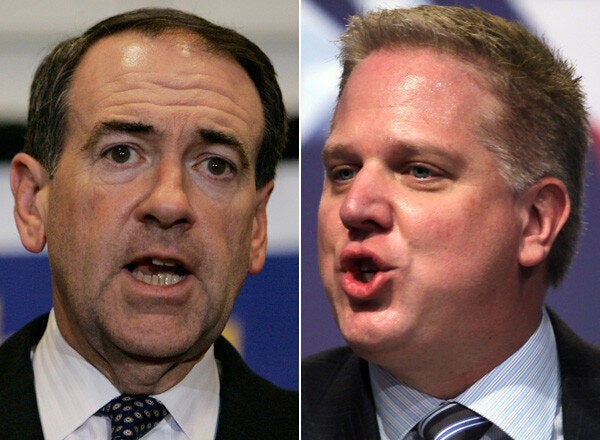
Mistrust of "mainstream media" is nothing new. It can be traced back to Civil War Era southern resentment towards snobby, educated, northeastern, liberal elites trying to "impose their way of life on the South." These feelings were reaffirmed during the Civil Rights Movement when news cameras exposed the dark side of southern living, inviting criticism from reporters, celebrities and musicians. The South fought back against what they perceived as an attack on their cultural identity by developing their own media. With the advent of the Internet Age independent news has become widespread. Anyone can publish an opinion and disseminate it to an audience. As a result, a culture developed in which people have the option of picking facts based on their political beliefs, instead of the other way around. The current debate over gun control is a testament to this trend.
The recent string of mass shootings, including Sandy Hook, the second deadliest attack by a single shooter in U.S. history, have put gun control at the forefront of the national dialogue. Unfortunately, there is no issue more bogged down by falsity. The situation is especially complicated because one side is decidedly more powerful than the other; the NRA outspends the entire gun control lobby by a ratio of 9.5-to-1. Through lobbying they've even managed to end federal funding for firearms research. For these reasons the internet contains a virtual echo chamber of pro gun websites claiming that gun laws do not work; that more guns lead to lower crime rates as indicated by research from Professor Gary Kleck and author of More Guns, Less Crime, John Lott Jr. These sites claim that such laws have no effect because statistics indicate that the 1994 assault weapons ban had little impact on gun violence as assault weapons are rarely used in crimes, and because "Chicago/Detroit is more violent than Houston." Chicago's gun laws are stricter than Houston's and Michigan's gun laws are stricter than Texas', depending on which argument is said. What's more, the pro gun echo chamber asserts, "legal gun ownersare not the people committing crimes."
These arguments have been thoroughly debunked. Peer review has refuted both Kleck and Lott's research. Multiple studies including several by Harvard University found they both overestimate of defensive gun use. The National Institute of Justice (NIJ) confirmed these findings and discovered that recreation is the most commonly cited reason for owning a gun. Would that not make guns just like any other recreational vice that has the potential to be destructive? Studies also indicate a direct corrolation between high gun ownership and high levels of violence. The Washington Post revealed that since the late 1970s violent crime has been declining with gun ownership. Mother Jones, the independent investigative journal found that the number of mass shootings has increased, most dramatically since 2007. The majority of the guns used in these shootings have been legally purchased which speaksvolumes about America's "responsible gun owners."
Regarding the efficacy of gun laws and restricting gun ownership, comparisons of gun violence in selective U.S. cities is a poor gauge. Unlike countries in Europe that have strict uniform national regulations on firearms, every city and every state in the U.S. has its own laws, with the federal government providingminimal requirements for ownership. Guns travel freely across state lines towards population centers. For example, many of Chicago's guns come from Indiana or elsewhere in Illinois.
So how does one measure? There are a few ways. One is to look at violence by region. Another is to see how the U.S. ranks when compared to all of Europe. These statistics paint a picture: The South has the most guns per capita and the loosest laws. It is by far the most violent region in the country. Moreover, the U.S. has the loosest gun laws in the first world, the highest number of guns per capita, and the highest rates of gun violence, boasting 15 of the 25 worst mass shootings in the past half century. Another fact to consider is that three of the recent shootings, including Sandy Hook were committed with an AR-15 rifle which was illegal under the now expired '94 Assault Weapons Ban. It is also worth noting the extremely low number of automatic weapons used in crimes as automatic weapons are highly regulated.
Of course, today one can simply refuse to acknowledge the evidence, claim conspiracy, and still be taken seriously. Gun rights advocates are prime examples of the power of cognitive dissonance. Kleck himself responded to criticisms of his research by claiming that all his academic critics letting personal bias cloud their interpretation of the numbers. Similar claims have been repeated countless times by gun rights advocates nationwide, including conspiracy theorist, Alex Jones, who accuse the media of having an anti-gun agenda. There are even those who claim that Sandy Hook was a staged event by the government and the media to take away the guns.
In spite of this trend, it would still be unfair to paint the picture that the culture of misinformation is destroying our political system -- to the contrary, these conspiracy theorists do not represent the direction America is moving, but rather a reaction to it. With an increasing number of major news publications fact checking, more and more Americans are opening their eyes, especially on the issue of guns, and politicians are taking notice. Recently, Senator Dianne Feinstein has proposed an assault weapons ban, and President Obama hasoutlined a new approach to gun control. The louder the gun rights echo chamber gets, the more indicative it is that the ground is shrinking underneath it.
